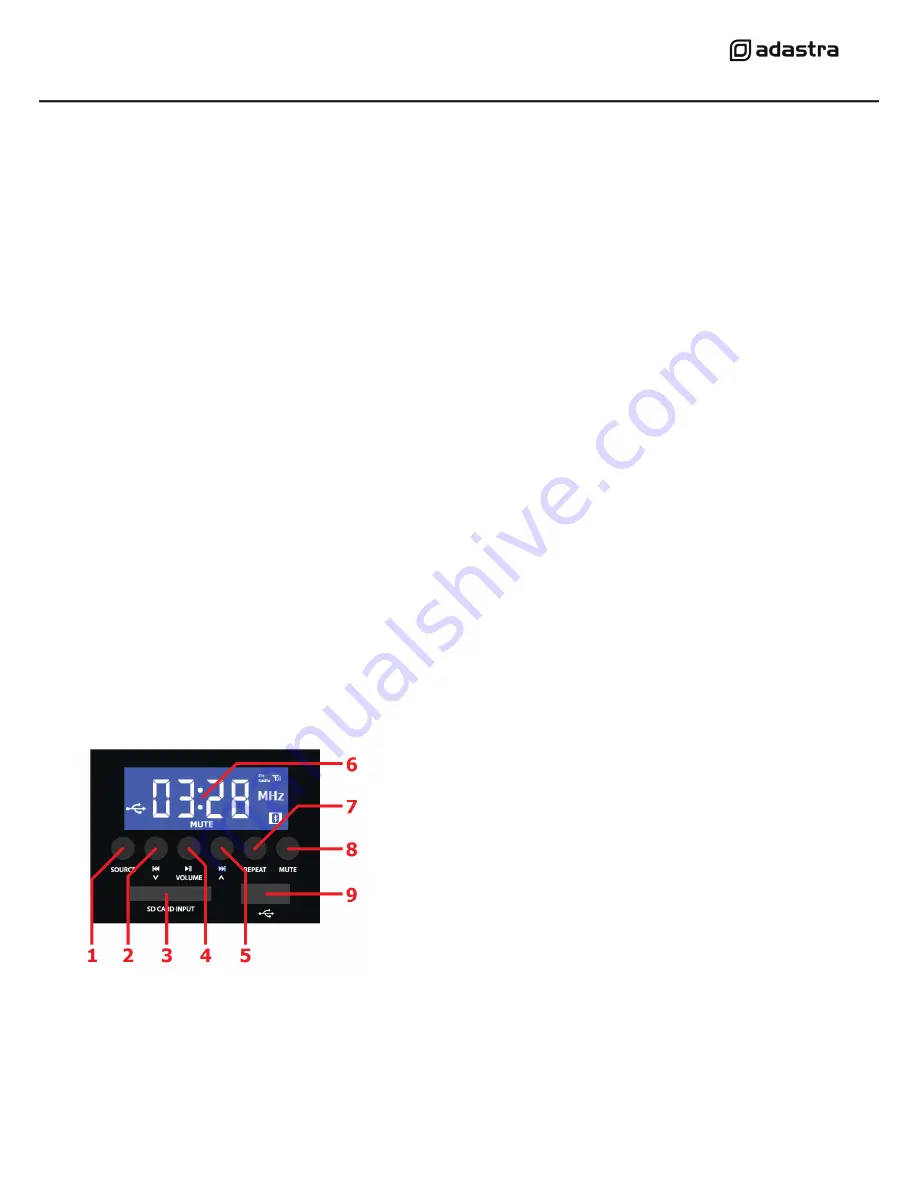
RM Series User Manual
The output of the amplifier is represented on the VU meter LEDs (10) and care should be taken that
the Red “0” LED is only lit momentarily during use. Anything longer than a short flash of this LED
may be indicating distortion or clipping of the output signal and the MASTER volume control or
channel volume control should be turned down.
If a microphone is connected to MIC 1 input, make sure it is switched on and if it requires phantom
power, make sure this feature is enabled on the DIP switch. Gradually increase the MIC 1 control (2)
whilst speaking into the microphone until the required volume level is reached. The microphone
should not be able to “hear” the speakers, which can cause feedback (squealing or howling noise).
Repeat this process for microphones or line inputs connected via the MIC/LINE 2 and MIC/LINE 3
inputs.
If the VOX feature is enabled, audio playback through channels 4 and 5 will be reduced in volume
automatically when speaking into MIC 1.
In addition to channel and MASTER volume controls, there are BASS and TREBLE EQ controls to
adjust the tone of the overall output. At the 12 o’clock position, these controls are applying no effect
to the signal (no boost or cut).
Moving the BASS control clockwise boosts the low frequencies in the audio, whilst moving it
anticlockwise will cut these low frequencies.
Likewise, moving the TREBLE control clockwise boosts the high frequencies in the audio, whilst
moving it anticlockwise will cut these high frequencies.
Adjust these EQ controls to suit the type of audio signal or compensate for the room acoustics.
Media player
RM60B, RM120B and RM240SB mixer-amplifiers are fitted with a built-in media player. This section
comprises a Bluetooth receiver, USB/SD audio player and FM tuner. Pressing the SOURCE select
button (1) will step through “bt” (Bluetooth), USB, SD card and FM tuner modes.
1. SOURCE select button
2. Previous / volume down button
3. SD card slot
4. Play / pause button
5. Next / volume up button
6. Media player display
7. REPEAT mode button
8. MUTE button
9. USB input


























